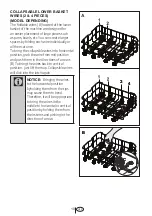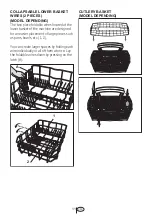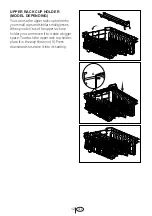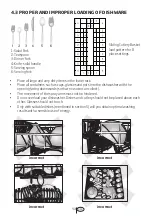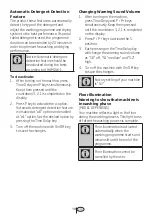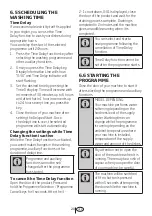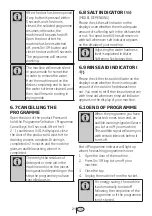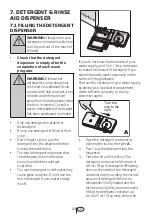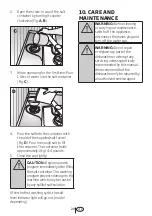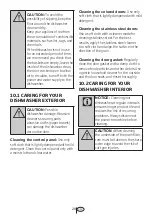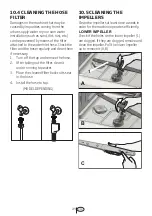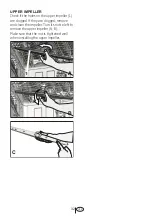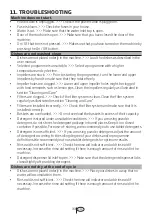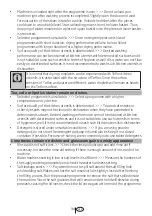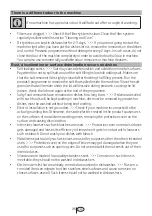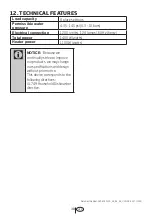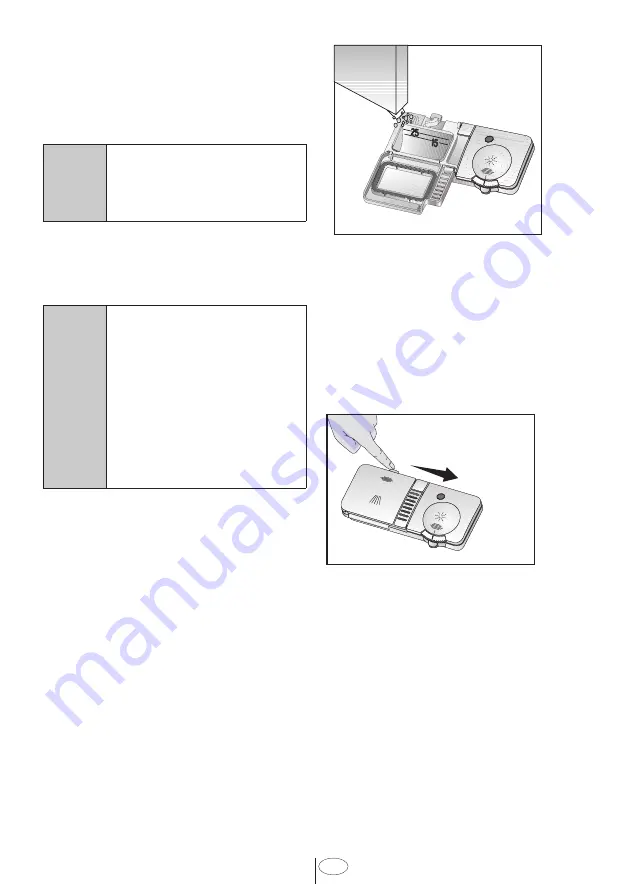
23
USA
7. DETERGENT & RINSE
AID DISPENSER
7.1 FILLING THE DETERGENT
DISPENSER
A
WARNING:
Always store your
detergent in locations which are
cool, dry and out of the reach of
children.
•
Check that the detergent
dispenser is empty after the
completion of each wash
program.
A
WARNING:
Dishwasher
detergents can be dangerous
if inhaled or swallowed. Avoid
contact with skin and eyes, keep
children and infirm persons
away from the dishwasher when
the door is opened. Consult a
doctor immediately if detergent
has been swallowed or inhaled.
•
Only use detergents suitable for
dishwashers.
•
Do not use detergent in Rinse & Hold
cycle.
•
Don’t forget to pour / put the
detergent into the dispenser before
turning the machine on.
•
Too much detergent may mean that
the detergent does not dissolve
properly and dishes could get
scratched.
•
Too much detergent in soft water may
cause glass corrosion. Do not use too
much detergent if your water supply
is soft.
If you do not know the hardness of your
water supply, use 15 ml / 3 tsp detergent.
Increase the amount of detergent if you
see white water marks especially on the
surface of the glassware.
Find out the hardness of your water supply
by asking your local water department,
water softener company, or county
extension agent.
1. Open the detergent container by
pushing the lock to the right
A
.
2. Pour / put the detergent into the
dispenser.
3. Close the lid until it clicks in.The
detergent container holds a total of
40 ml / 8 tsp of detergent
1
.Marking
lines on the inside of the detergent
container aid in providing the correct
amount of detergent. When the
dishwasher is fully loaded and the
dishes are very dirty, we recommend
filling the detergent container up
to the 25 ml / 5 tsp mark. When the


